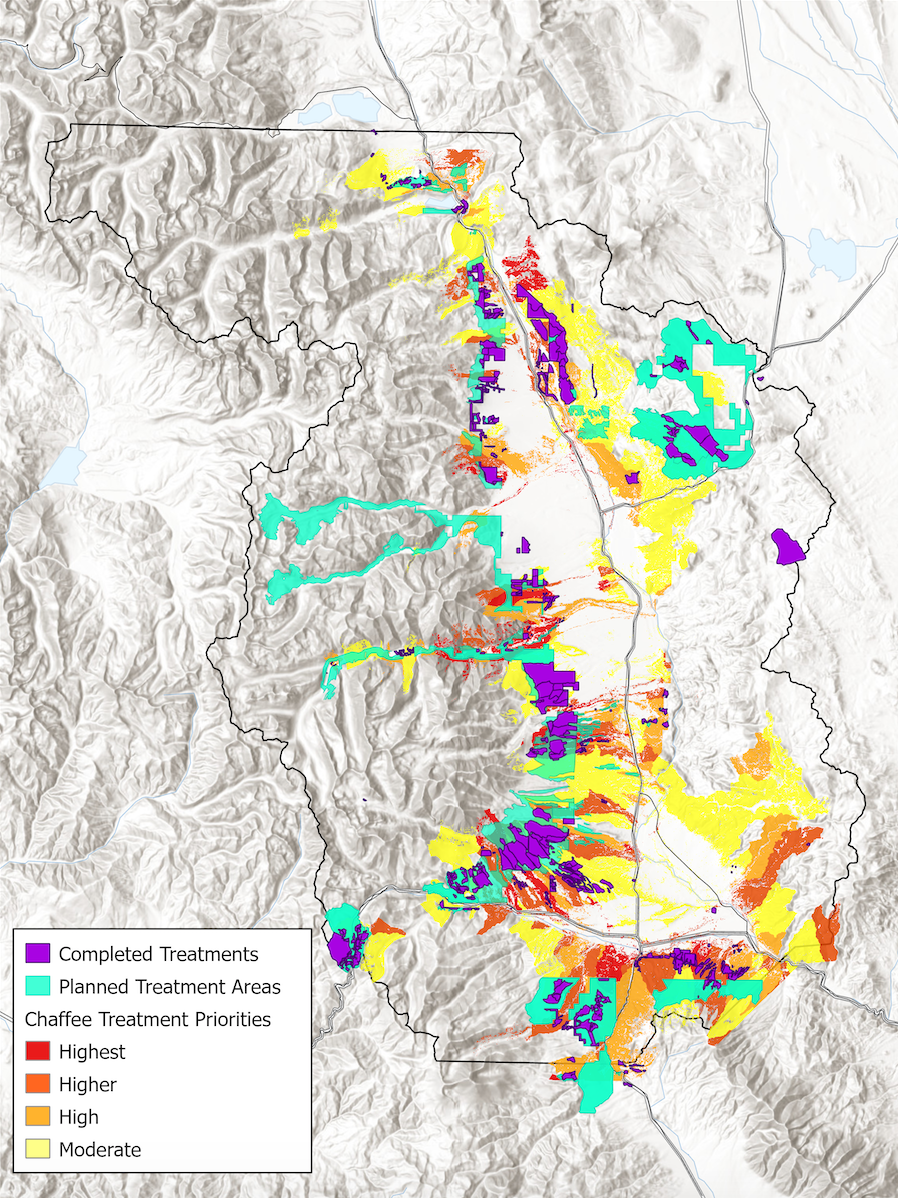The CWPP’s major goal is to treat 30,000 acres by 2030
How targeted tree thinning results in strategic wildfire mitigation
The plan was created by first engaging the community through a survey, which showed strong support for forest treatments, as 84% said they have “no concern” about land management activities such as thinning trees.
The community also was asked to prioritize what they most want protected from wildfire and post-fire flooding.
The seven community assets, in order, are firefighter lives, human life, drinking water, infrastructure, homes, wildlife, Arkansas River recreation, scenic views and trail systems.
With this input, the Colorado Forest Restoration Institute (CFRI) produced the Composite Wildfire Risk map, showing where our community’s most valued assets are at the highest risk.


The cost of doing treatments is factored into the final map to identify where treatments can do the most to lower risk for the least amount of money — or where we can get the best “bang for the buck.”
Treatment options include thinning trees, prescribed fire, thinning to clean up slash and a patch-clearing method used in the piñon-juniper forest called mastication.
CFRI’s modeling — guided by local experts and driven by community priorities — demonstrates that treating a small, targeted portion of the total landscape can substantially reduce wildfire risk.
Taking Action
More than 12,000 forested acres of public and private lands have been treated in the last five years.
That is 41% of the way toward achieving the CWPP’s top goal of treating 30,000 targeted acres by 2023. Treatments span both public (70%) and private property (30%).
Chaffee County’s Treatment Priority Areas (red, orange and yellow) are based on computer modeling that identifies the right areas to treat to reduce fire’s potential affects on critical community infrastructure and improve firefighter safety.

12K+ acres have been thinned (purple) since 2020, and 14K additional acres are planned (teal) to achieve the long-term goal of treating 30K targeted acres by 2030.
IN SUMMARY
The 400+ acre project spanning two watersheds has reduced wildfire risk for residents of two counties and protected recreation spaces on federal land, power lines, a critical evacuation and transportation route and drinking water supply.
– The Decker Fire served as a wake-up call for the importance of a healthy forest and the need for forest management to prevent future disasters.
– The Douglas Fir Beetle and Western Spruce Budworm were identified as the main culprits behind the dying trees, emphasizing the need for insect control measures.
– The forest management project focused on both public and private lands, recognizing the interconnectedness of fire mitigation efforts.
– Preserving open areas for camping and power lines was a critical aspect of the project to ensure public safety and protect infrastructure.
– The successful outcome of the project, with healthier trees and new growth, showcases the positive impact of forest management on the landscape.
– The transformed forest reflects the long-term benefits of proactive forest management and their commitment to monitoring its growth.
Some of the other actions of the CWPP
Envision worked with Chaffee Fire and the county Office of Emergency Management to create the simple 6 STEPS to family evacuation preparation:
IN SUMMARY
– Prescribed burns are a critical ecological practice that safeguards ecosystems and promotes biodiversity. They help maintain the delicate balance of nature in our forests.
– Meticulous planning and coordination are essential for the success of prescribed burns. Detailed analysis, project boundaries, and safety parameters are crucial steps in the planning process.
– Prescribed burns require the involvement of numerous fire personnel, including firefighters, fire engines, water tenders, ATV drivers, and specialists. Their presence ensures safety during the burn.
– Weather factors like temperature, humidity, wind, and vegetation moisture are closely monitored during prescribed burns to ensure optimal conditions and smoke dispersal.
– Prescribed burns reduce the chance of high-intensity catastrophic fires by clearing forest fuels and creating open meadows that are beneficial for wildlife.
– Prescribed burns are vital in fire-prone areas like Colorado as they prevent large-scale devastation seen in uncontrolled wildfires. They allow foresters to choose the time, place, and best conditions for the burn.
– Prescribed burns executed with precision are crucial for preserving lives, property, and the natural splendor of our forests. They minimize the impact of smoke on communities and maximize the benefits for the ecosystem.





